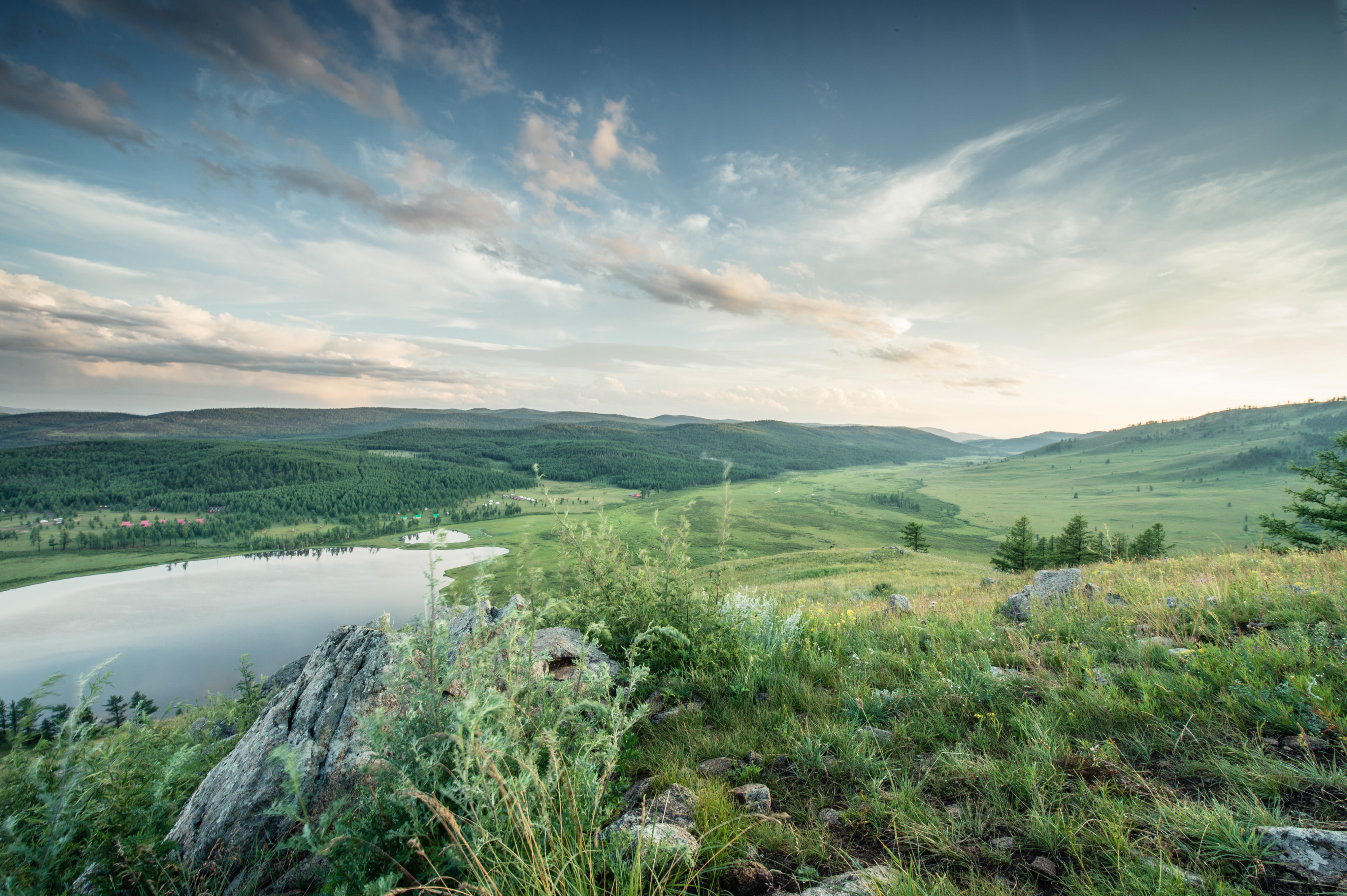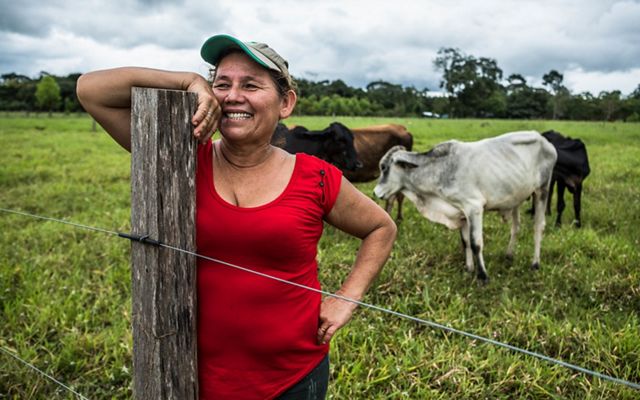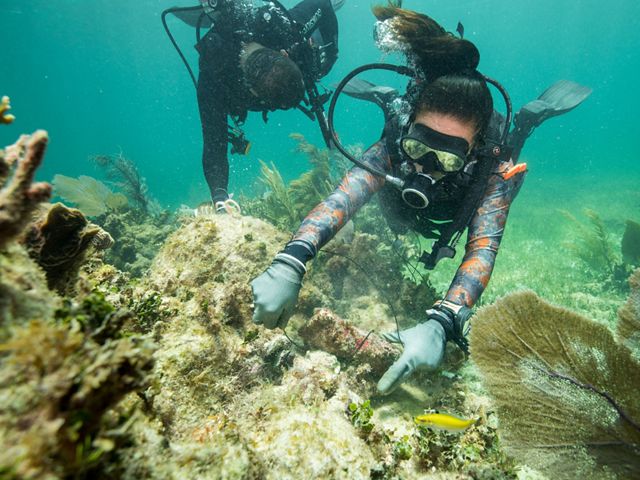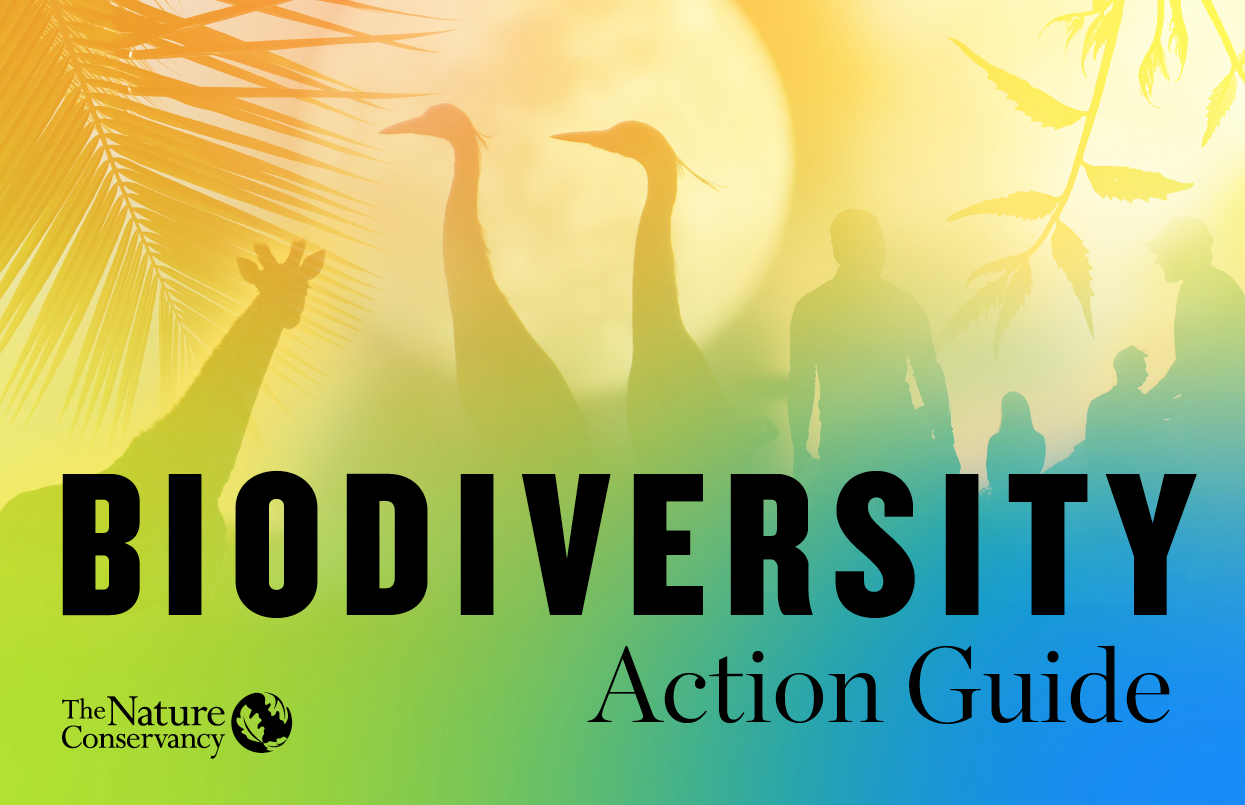
The Biodiversity Action Guide
There’s no shortage of strategies available to create a nature-positive planet now—our downloadable guide shows how to translate ambition into action.
We are living through a make-or-break chapter in the story of life on Earth. In the last 50 years alone, there has been a significant and documented decline in many species. Today, a full third of freshwater and marine species face extinction, while countless invertebrates could disappear before we realize their full importance to their ecosystems.
Humanity occupies a unique position in this climax. Our actions this decade could either restore the ecological balance or tip it, causing species that rely upon one another within ecosystems to fall like dominoes—with devastating outcomes for human well-being. However overwhelming it sounds, there is good news hidden in these facts: We can still change how this story unfolds.
We still have a chance to save species—and ourselves—if we act now.
But to confront the interconnected crises of biodiversity loss and climate change, we’ll need to rethink business as usual. This is indeed a tall task, but as conservationists, policymakers and ordinary citizens around the world have already shown, it is not an impossible one. Though we fell short of the biodiversity goals set in 2010, our societies successfully protected 17% of global lands, slowed global forest loss, and spoke up for nature louder than ever.
That’s a reason for hope, but the science is clear: it’s not enough. Global biodiversity continues to decline at an alarming rate, exacerbating climate change. As governments prepare to set new global targets at the Conference of the Parties of the Convention on Biological Diversity (CBD COP15) we must meet the existential stakes of dual planetary crises with higher ambitions for the protection, management and restoration of nature.
And Earth can’t afford more hot air: these new commitments must be actionable, leading to durable, representative and effective habitat conservation. We must strive to strategically protect 30% of nature and improve the rest of this decade to avoid the worst consequences to our collective health and wealth. The Nature Conservancy’s (TNC) Biodiversity Action Guide presents concrete examples of how nations can realize their ambitious commitments under the CBD, the UN Sustainable Development Goals and other global agreements. As the case studies, tools and resources in our guide illustrate, it is possible to replace destructive practices with nature-positive solutions across sectors worldwide right now—and the sooner we start, the more we can save.
Download
The Nature-Positive Path to 2030
Think beyond parks and protected areas.
Sometimes preserving lands and waters intact is the best thing for nature and people—as illustrated by China’s new national parks system, which has been a boon for rural economies and wildlife alike. But conservation strategies can look as different as Earth’s land and seascapes themselves.
In some places, significant biodiversity protection has already been achieved, while in others, even 30% may not be enough. And while we certainly need to protect and restore some natural systems, we also need to plan for the in-between—those geographies where development can’t be avoided. That might mean factoring in ways to mitigate or compensate for damage.

However, most new development needn’t come at the expense of nature. For instance, TNC scientists have found that we could exclusively utilize previously degraded lands for the clean energy infrastructure needed to transition the world away from fossil fuels.
We need to find the balance between protected areas and those that are managed for conservation though less formal means. Together, these areas can provide the ecological connectivity between protected areas that will be required to save species and habitats. Planning development—including critical green energy investments—for areas less likely to fragment habitat also makes protection efforts more likely to succeed. Protection, management, and restoration working hand-in-hand can allow us to reach ambitious biodiversity protection goals.
The upshot: Global protection goals can be met with an integrated approach. We must invest in spatial planning and science to inform the locations of both protected areas and development projects.
Learn how in “Chapter 5: Spatial Planning and Management"


Don’t shut people out.
Some still mistakenly believe that nature is a faraway place, with conservation existing to rope off parcels of “the wild” as a sort of trade-off for human development elsewhere. Meanwhile, Indigenous peoples have long protected their lands and waters in reciprocity with nature, often guided by deep connections to place, culture and ways of knowing.
Indigenous communities collectively manage at least one-quarter of the world’s lands, 17 percent of all forest carbon, and vast stretches of freshwater and marine habitats. Their stewardship and management often achieve greater conservation results and sustain more biodiversity than government-protected areas, and yet many continue to be deprived of rights in their homelands.
As the IUCN has acknowledged, empowering Indigenous leadership—like a recent Canadian effort aimed to do with the return of a 6.5-million-acre territory to the Łutsël K’é Dene First Nation—is among the surest ways to ensure the protection of nature. For generations, colonialism, forced resettlement, strong external development pressures and exclusion from natural resource decisions have undermined the agency of Earth’s traditional stewards, with devastating outcomes for their communities and their homelands.
The Upshot: When the legacy of these challenges is addressed, authentic partnership with Indigenous peoples and local communities can lead us to a world where people and nature thrive together—as they have done for millennia.
Learn how in “Chapter 1: Formalizing Rights for Indigenous and Local Communities”

Work at the speed of partnership.
While it’s essential to respond to the crisis of nature loss with urgency, speed isn’t the only requisite for effective action. Wherever policymakers, NGOs and corporate stakeholders may have an outsize voice, special efforts must be made to amplify the voices of the people closest to the soil, coasts and forests in question—from farmers and fishers to Indigenous peoples and other local communities.
Such empowerment is indeed a moral imperative, but it’s also pragmatic. After all, who could better tailor, champion and implement effective place-based conservation approaches than the people whose livelihoods depend on them and experience them day in and day out?
Authentic partnership may be among the only necessary constants for lasting conservation, the strategies for which, as previously mentioned, vary from place to place. Kenyans, for instance, have formed more than 100 community-led conservancies across the country to compensate local people for their efforts to protect native wildlife. In Colombia, TNC has partnered with local smallholders to encourage regenerative farming practices, resulting in a boost in agricultural productivity and regional biodiversity. Research shows that these area-based conservation measures, led by local communities, can reinforce more formal ecosystem protections, making it possible to reach ambitious global goals.
In Brazil, for example, through the sustainable management of forest products by Indigenous and traditional communities, the sociobioeconomy of Pará State in the Amazon was found to generate a value equivalent to cattle, one of the main economic drivers of the state. With incentives, this economy can generate an income of more than R$170 billion by 2040, helping to protect the standing forest and all the biodiversity it supports.
In the Appalachian region of the United States, TNC has collaborated with state and regional organizations to restore habitat and successfully reintroduce populations of once-extirpated elk [insert text link that jumps to this case study]. The grazing animals change the ecosystem, supporting other species, and creating opportunities for communities to develop wildlife tourism and hunting businesses; an approach that exemplifies the people and nature goals of the America the Beautiful initiative.
The upshot: Durable conservation is deliberate conservation—that means engaging and empowering local communities every step of the way.
Learn how in “Chapter 3: Amplifying Community Leadership”


Invest in the future you want.
Despite society’s dependence on a biodiverse planet, nature’s value is typically underrecognized in the global economy. TNC and partners estimate it would take around US$700 billion annually to reverse the biodiversity crisis and facilitate a nature-positive transformation across all sectors—a daunting figure, until you consider it represents less than 1 percent of the annual global GDP.
What’s more, simply reducing public and private investments that are harmful to nature and redirecting them toward beneficial practices could close nearly half the nature financing gap. Still, we’ll have to generate hundreds of billions a year in new revenue to be truly effective, and much of that will come from financial innovations.
Take coral reef insurance. In 2019, the Mexican state of Quintana Roo joined the National Parks Commission, local stakeholders and TNC to purchase the world’s very first policy, enabling rapid response teams to jump into action when storms damage the region’s reefs, which are habitats vital for the economy, safety and livelihoods of local communities.
After committing to protect 30 percent of its waters in 2012, the Republic of Seychelles worked with TNC to pioneer another new financial mechanism called Blue Bonds for Ocean Conservation. In partnership with TNC, the government established a new model for debt restructuring that provided the relief and revenue it needed to address dwindling fish populations, adapt to new climate impacts and advance the “blue economy”—as well as achieve its protection target in 2019.
The upshot: While philanthropy and public funding have long been essential for conservation, the scale of the crisis facing nature today requires new funding sources, as well as using incentives and spending to shape a more sustainable future for all. The restructuring of sovereign debt can provide a means of directly funding conservation work over time, while supporting nature-based industries that provide economic opportunity in the long term.
Learn how in “Chapter 2: Financing for a Durable Future” and “Chapter 4: Debt Relief and Restructuring”

From Commitment to Action
From the growing roster of national leaders signing on to the Leaders Pledge for Nature to swelling grassroots movements around the world, we are experiencing a heartening surge of ambition to confront climate change and biodiversity loss. But ambition is no longer enough—we need concrete actions to protect nature now, or else it will be too late. This is the purpose of the Biodiversity Action Guide—to share strategies for durable conservation that can be implemented at scale today. Because the challenge before us calls for nothing less.
Download
Global Insights
Check out our latest thinking and real-world solutions to some of the most complex challenges facing people and the planet today.



